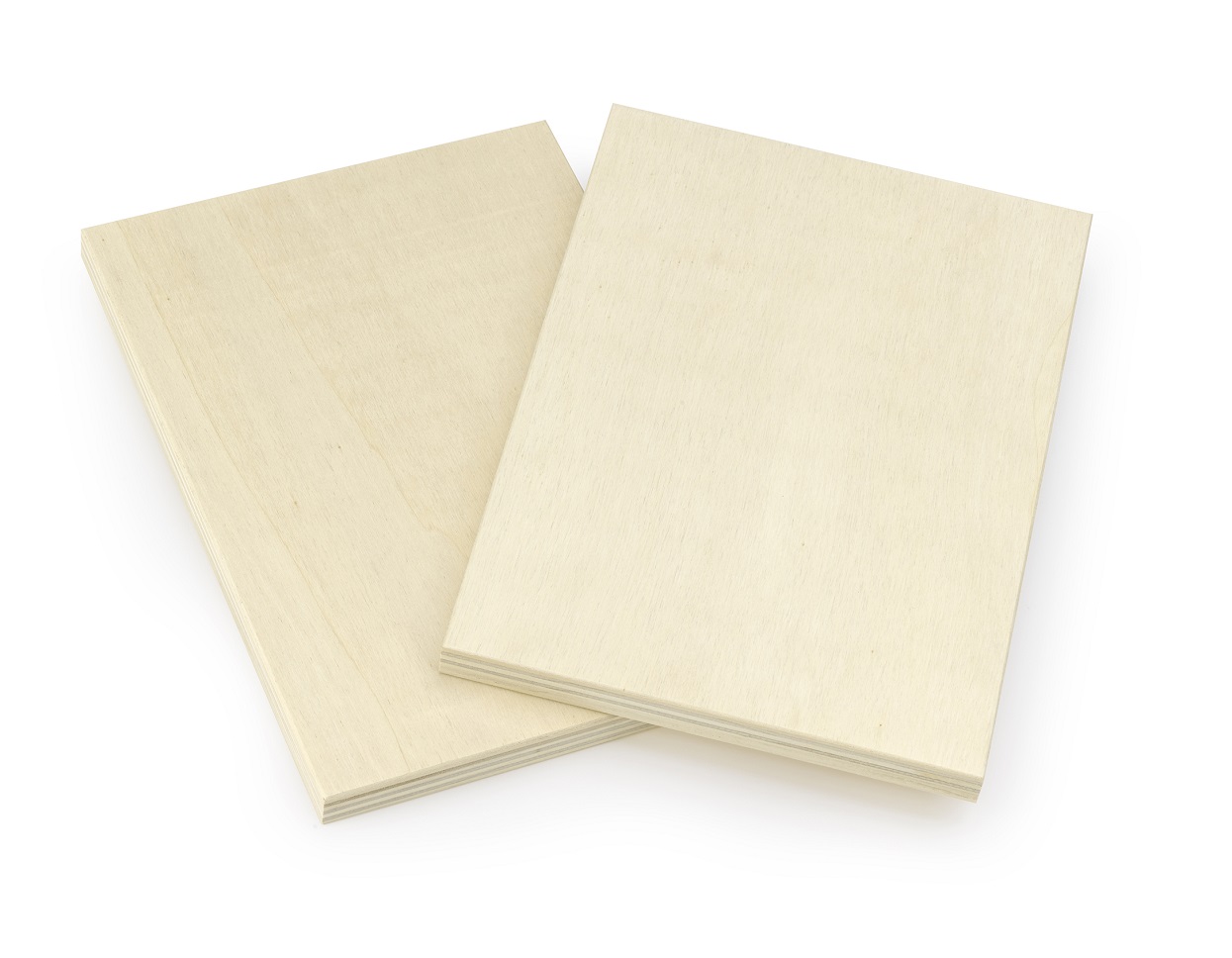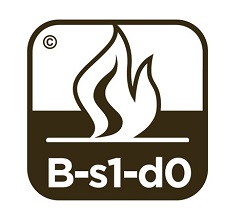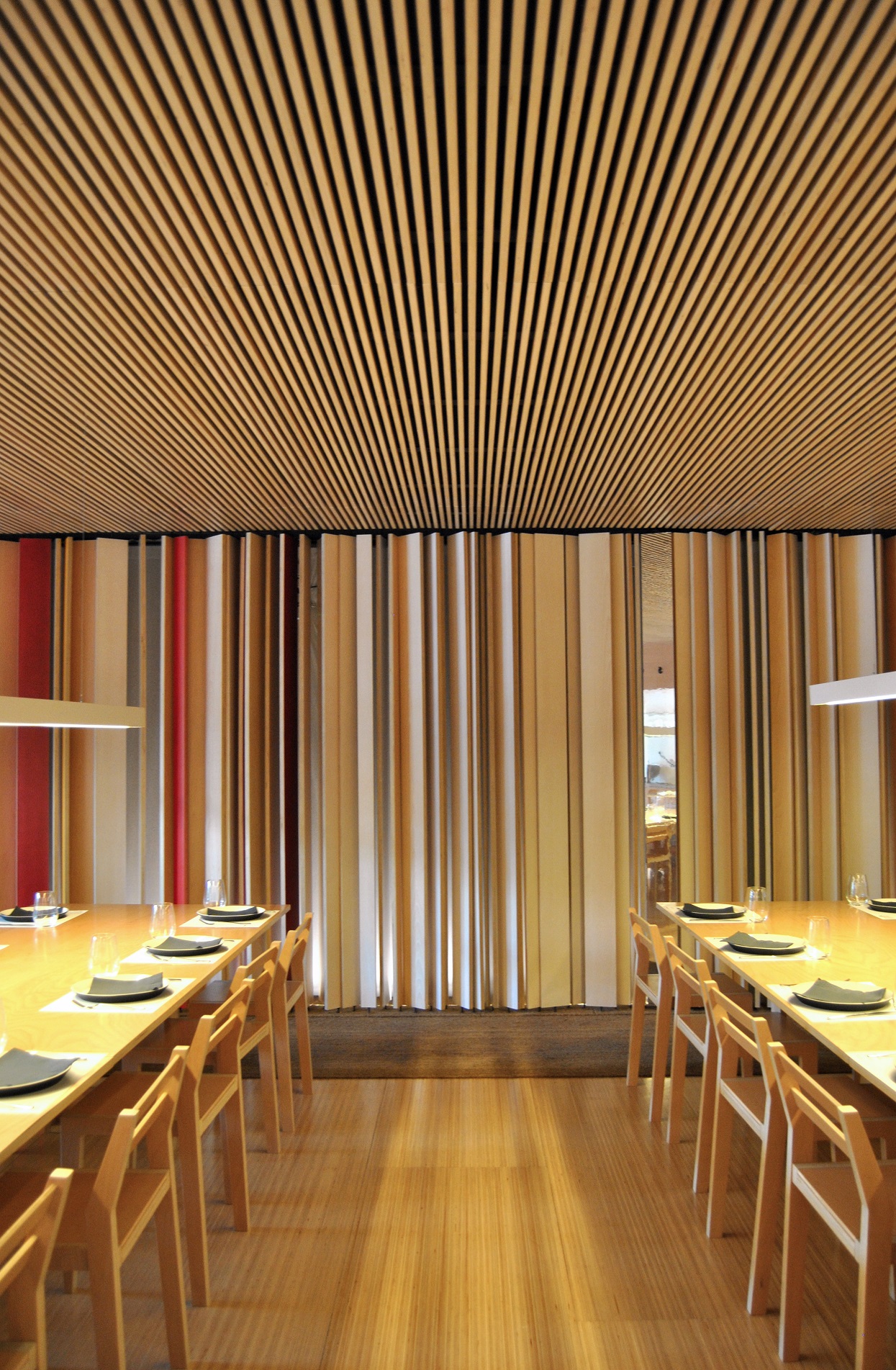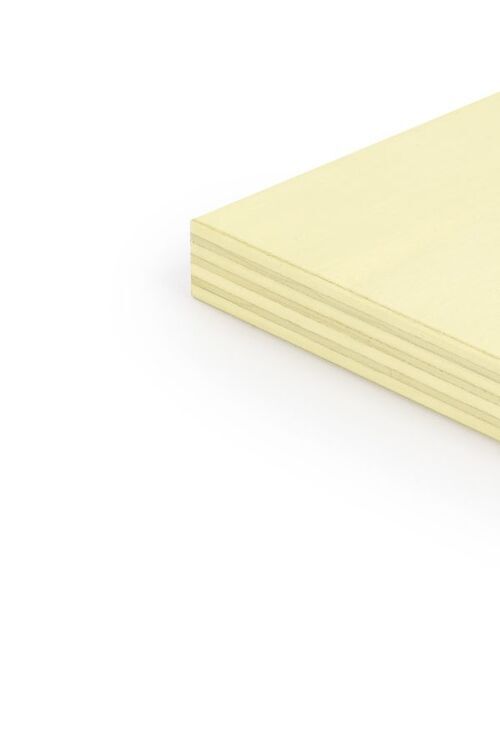Unlike other treatments, its properties remain intact when working or sanding the panel.
Fireshield is a panel developed by Garnica and manufactured using an innovative process, giving it exceptional fire retardant properties.

Fireshield has B-s1-d0 classification, which indicates that the product has very high fire resistance to in three aspects:
- contribution to fire
- smoke opacity
- fall of flaming drops

Although wood can never become a non-combustible material, since by its very nature it contains carbon, with the Fireshield fire-retardant treatment, it goes from a D-s2-d0 classification, which is the norm in untreated wood, to a B-s1-d0 classification, the best that can be obtained in wood.
Years ago, there was no international approval regarding fire resistance classification, but with the creation of the 89/106/EEC European directive, essential and mandatory requirements for the movement of products within the European Union were put into place: the designated Euroclasses.

The Euroclasses have led to a new system of classification and much more precise and high-tech tests than those existing until recently, and which were based on a rudimentary and simplistic categorisation of only five classes (M0, M1, M4). The new classification is made up of a combination of three parameters (energy, smoke and drops) which, when combined, produce 40 different classes.
7 levels of contribution to fire:
- A1, not combustible to maximum degree
- A2, not combustible to a lesser degree
- B, very low contribution to fire
- C, limited contribution to fire
- D, average contribution to fire
- E, high contribution to fire
- F, unclassified

Taking into account the smoke opacity (their toxic character aside *) three classifications may be distinguished:
- s1, corresponding to cases of low and slow opacity
- s2, applicable in cases of medium opacity
- s3, corresponding to high and rapid opacity
* However, although the Eurocodes do not classify the toxicity of gases, Garnica has the NF 16101 certificate that applies to trains where this parameter is taken into account, and has obtained the Fireshield F1 classification - the best achievable (from F1 to F4).
As for drop formation, products can be:
- d0, in those cases that do not produce inflamed drops
- d1, when they occur but their duration is less than 10 seconds
- d2, in all other cases
In summary, the classification of materials will be the result of the combination of performance in each of these three aspects, where the Fireshield B-s1, d0 classification indicates that it is a product with very low contribution to fire, with a low fumes emission and without emitting drops or inflamed particles.
In this way, Fireshield complies with the Technical Building Code (CTE) in terms of safety standards for the prevention of fires and is, therefore, a very suitable material for public establishments.
The CTE, to which architects and designers refer for the design of their projects, demands that coatings have B-s1, d0 classification in walls and ceilings. For this reason, Fireshield is frequently used in the coatings of restaurants, auditoriums, and other public buildings that require the use of such products.

Tondeluna restaurant in Logroño (La Rioja) built with the Fireshield product


